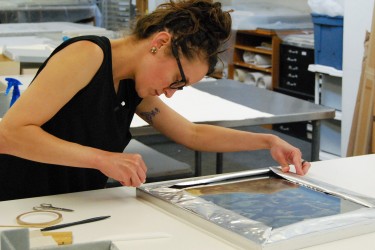
FAQ
We get a lot of questions.
Here are some of the questions we hear the most. If you don't find the answer you're looking for below, get in touch!
What's the difference between conservation and restoration?
Mostly, semantics. But restoration tends to connote purely aesthetic interventions, making an object "look better" in the short term. Conservation, on the other hand, is a holistic set of strategies to stabilize and prolong the life of the object and, when appropriate, improve its appearance.
How much will conservation treatment cost?
Every object is unique, and treatment costs can vary widely, but treatment will rarely cost less than $500.
Can you tell me how much my treatment will cost by looking at a picture of my object or talking over the phone?
We can begin the conversation over the phone or by looking at photographs, but in order to determine the best course of treatment, conservators need to see an object up close, in person. Often, they need to perform spot testing and examine an object for more than an hour. It is not possible to get the right information over the phone or from a photograph of the object. You can expect to pay at least $150 for a condition report.
Can you appraise or authenticate my object?
No. We treat every project as though it's one-of-a-kind. It's an ethical conflict of interest for us to consider market value of an object, and we don't have the expertise to do so. We can, however, recommend appraisers.
Can you recommend a conservator to treat my oil painting / textile / furniture / etc.?
We have several colleagues we recommend to clients in the Philadelphia area. We also suggest you consult the "Find a Conservator" database on the website of the American Institution for Conservation of Historic and Artistic Works (AIC).
Do you wear gloves all day long?
It depends! Often, it's best for an object if a conservator maintains their full tactile abilities as they work with precision tools. We wash our hands a lot and use our best judgment.

